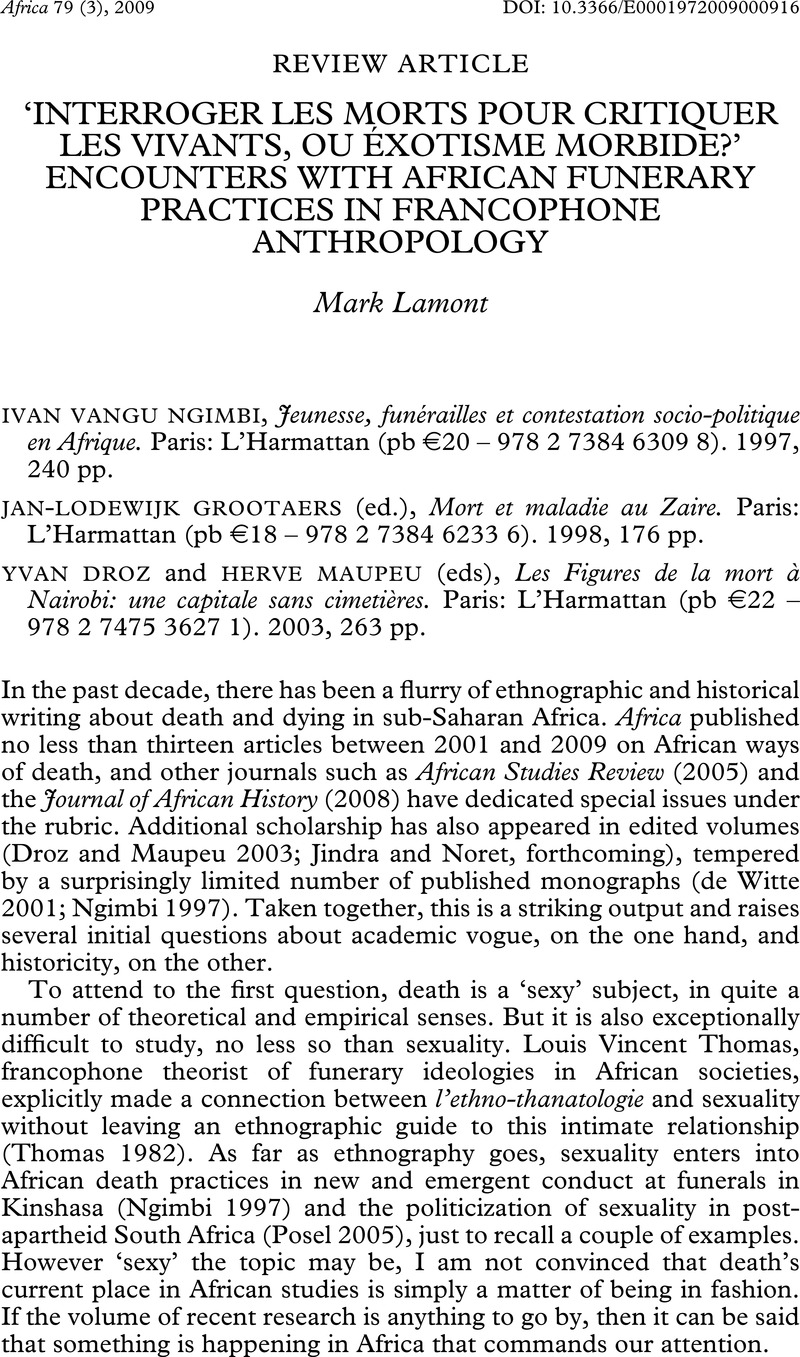Crossref Citations
This article has been cited by the following publications. This list is generated based on data provided by Crossref.
De Boeck, Filip
2013.
A Companion to the Anthropology of Religion.
p.
528.
Fontein, Joost
2018.
A Companion to the Anthropology of Death.
p.
337.



